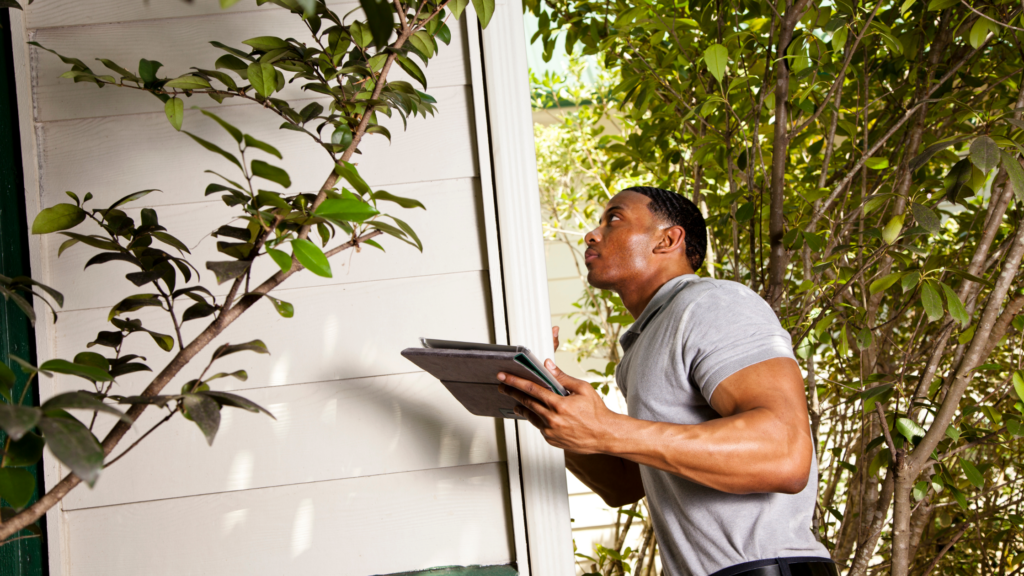Home Inspection Checklist for Buyers
When it comes to buying a home, one of the largest financial commitments one will make during their lifetime, there are few elements more crucial than the home inspection.
As such, we’re going to give you the rundown on everything you need to know about home inspections as well as provide you with a checklist, so you’re equipped when the time comes.
Let’s dive in!
What is a Home Inspection?
A home inspection is a thorough, comprehensive examination of a home’s physical structure and systems, both internal and external, and typically occurs during the home buying and selling process.
Home inspections are performed by licensed home inspectors and unearth any major problems with the home that need to be addressed.
Home Inspections Vs. Home Appraisals
Home inspections, as mentioned, are thorough examinations of a home and help to bring to light significant issues with a home that may be dangerous or costly down the line.
Home appraisals however are an assessment of a property’s worth. While home appraisals take into consideration any issues the home may have that would lower the value, they are not as thorough and also take other factors into account such as the home’s location and property values of similar homes in the area.
Additionally, home appraisals serve an entirely different purpose. Home inspections are usually issued by the buyer and are overall about determining the home’s integrity and safety. Appraisals on the other hand are most often issued by the lender to ensure they are not giving out more money than a home is worth in order to protect themselves in the event that a homeowner should default on their loan.
Why Are Home Inspections Important?
Home inspections are important because what glitters isn’t always gold.
Although a home may appear to be in good condition, once inspected, major issues may be unearthed that compromise the safety of the dwelling, potentially costing the new homeowners thousands of dollars in repairs at best. At worst, the home could be unsafe to live in and jeopardize a family’s health and safety.
As such, home inspections are very common in the home buying and selling process. So much so that home inspection contingencies are often put into place to protect the buyer in the event that major issues may come to light. Home inspection contingencies allow the buyer to back out of a sale once in escrow without losing money in the process.
How Much Do Home Inspections Typically Cost?
You can expect to spend anywhere from a couple hundred dollars to a couple thousand on the very high end, depending on the size of the dwelling.
Should I Expect Any Other Costs?
Sometimes, a home inspection will uncover issues that may require an additional inspection.
Some common secondary inspections include radon, termite, asbestos, lead, and mold to name a few. Although it’s clearly not ideal to need a secondary inspection, it may be necessary to ensure you’re moving into a safe environment.
Choosing the Right a Home Inspector
While it’s not a bad idea to shop around for the right home inspector, generally, a good real estate agent will have a trusted home inspector or home inspection company they know will be thorough and get the job done right.
You may want to shop around a bit on your own, but starting with your agent is always going to be your best bet.
How to Prepare for a Home Inspection
If you’re a buyer, you’ll want to review the home inspection checklist provided below.
Additionally, it’s never a bad idea to attend the inspection yourself, so you can ask questions in real time. Try not to get hung up on minor details, but rather spend time digging into any major issues the home inspector may bring to light that could be potential deal breakers.
Home Inspection Checklist
Now, the good stuff: the home inspection checklist.
Use this checklist as a guide, not as a substitute for a formal home inspection by a licensed home inspector.
Grounds
- Proper drainage away from the house with no evidence of standing water
- No evidence of leaks from the septic tank
- Driveways, sidewalks, patios, entrance landings in good condition and pitched away from structure
- Railings on stairs and decks are adequate and secure
- No branches or bushes touching the house or overhanging the roof
- Exterior structures (fences, sheds, decks, retaining walls, detached garages) in good condition with no evidence of termite damage or rotted wood
Structure
- Siding appears straight and not bowed or sagging
- Windows and door frames appear square and not bowed
- Visible foundation in good condition, appearing straight and with no significant cracks
Exterior Surfaces
- Adequate clearance between ground and any wood siding (6″ minimum; no wood-to-earth contact)
- Siding has no cracking, curling, looseness, rotting, or decay
- For brick veneers: no cracks in joints, nor any broken or flaking components
- For stucco: no large cracks
- For vinyl or aluminum siding: no dents, damage, bowing, or loose siding
- For exterior paint: no flaking, blistering, or stains
- No vines on surface of structure
Windows, Doors, and Wood Trim
- Wood frames and trim are secure and without any cracks, rot, or decay
- Joints around frames are properly caulked
- For windows: No broken glass or damaged screens, double paned, and with insulated window seals
- For storm panes: secure and not broken or damaged
Roof
- For composition shingles: no curling or cupping, no loss of granulation particulate, no broken, damaged or missing shingles, and no evidence of excessive roofing (no more than two layers of roofing)
- For wood shingles: no curling or cupping, no mold, rot or decay, and no cracked, broken, or missing shingles
- For flat roofs: no obvious patches, no cracks or splits, minimal blisters and wrinkles, no silt deposits, and sealed tar at flashings
- Flashing around roof penetrations
- No evidence of excess roofing cement, tar, or caulk
- No decay or stains of soffits and fascia
- Exterior vents are clean and clear
- For gutters: no decay or rust, joints sealed, attached securely to structure, no bending or sagging, no sections of gutter or downspout missing, gutters clean and without mud deposits
- For chimneys: straight, properly flashed, no evidence of damaged bricks or cracked joints, mortar/cement cap in good condition
Attic
- No evidence of decay or damage to structure
- No stains on underside of roofing
- Sufficient and properly installed insulation
- Proper ventilation
- No plumbing, exhaust, or appliance vents terminating in attic
- No open electrical components
Interior Rooms
- Floors, walls, and ceilings appear straight and level
- Flooring material in good condition
- No significant cracks in walls or ceilings
- Windows, exterior doors, and interior doors operate easily and latch properly, are without decay or damage, and are without and broken hardware or glass for windows
- Paint, wall covering, or paneling in good condition
- Lights and switches operate properly
- Adequate number of three pronged electrical outlets in each room
- Electrical outlets function properly
- Source of heating/cooling in each legal bedroom
- For fireplaces in interior rooms: no staining on facade (staining indicates backdrafting), damper operates properly, flue has been cleaned and lined
Kitchen
- Working exhaust fan
- GFCI (Ground Fault Circuit Interrupter) within 6 feet of sink(s)
- Water flow in sink(s) adequate
- No leaks under sink(s); floor in cabinet under sink solid and without stains or decay
- Dishwasher drains properly, without leaks, and door spring operates properly
- Built-in appliances operate properly
- Cabinets and drawers in good condition and operate properly
Bathrooms
- Working exhaust fan
- Adequate flow and pressure of all fixtures
- Sink, tub, and shower all drain properly
- Plumbing and cabinet floor under sink in good condition, without stains or evidence of leaks
- Toilet stable, is without stains around the base, and operates properly
- Caulking inside and outside of tub and shower area in good condition
- Tub and/or shower tiles secure or other wall surface material solid
- No stains or evidence of past leaking around base of shower and/or tub area
Basement/Mechanical Room
- No evidence of moisture
- No stains or major cracking of any exposed foundation
- No sagging, decay, or damage of any kind to visible, structural wood; additionally, sills attached to foundation with anchor bolts
Crawl Space
- No evidence of insect or moisture damage
- Adequately vented to exterior
- Insulation on exposed water supply, waste, and vent pipes
- Insulation between crawl space and heated areas
Plumbing
- Visible pipes: no damage or evidence of leaks; pipes angle slightly down toward septic/sewage system
- Water heater: no signs of rust, vented properly, adequately sized given size of home
- Water pump: does not short cycle
- Galvanized pipes: do not restrict water flow
- Well water test acceptable
- Hot water temperature between 118-125 degrees Fahrenheit
Electrical
- Any visible wiring in good condition, without exposed splices, cables secure and protected
- Service panel: adequate capacity, with all cables attached to the panel with cable connectors, and no overheating of fuses or breakers
- No aluminum cable for branch circuits
Heating/Cooling
- System appears to be functioning well throughout the home (i.e. good air flow of forced hot air systems)
- No rust around unit
- No gas odor
- Air filter(s) clean
- Ducts in good condition
- Flues are without seams and slopes us to the chimney connection; separate flues for gas/oil/propane and wood/coal
- No asbestos on heating pipes, water pipes, or air ducts
Miscellaneous
- Smoke and carbon monoxide detectors function properly and are where required by legal, local ordinances
- Stairway treads and risers is good condition; stair handrails where needed and in good condition
- Automatic garage door opener operates properly, stopping for obstacles
Takeaways
The home inspection checklist provided is clearly very extensive. However, it is not a substitute for a proper home inspection, completed by a licensed home inspector.
Additionally if you are a homeowner that has come across this checklist, some items may not be safe for you to check yourself and should not be assessed by you; these items include electrical work and looking within the crawl space as inspectors have proper equipment and PPE to assess these items.
That being said, no home is perfect. While home inspectors check for everything, as you can see, they are paying most attention to major red flags, so you should too.
If you have any further questions about home inspections or the home buying and selling process, please reach out to us!




